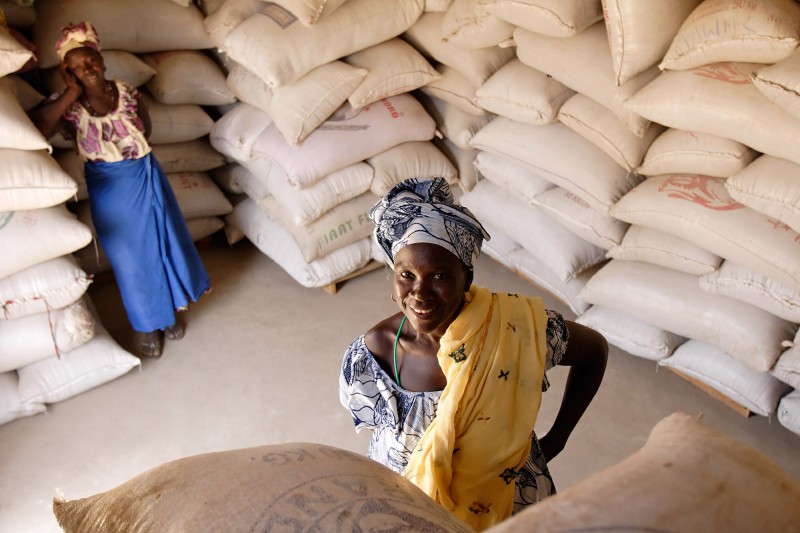Foreign aid isn’t new & shiny, but it’s still relevant
 Village committee organizer Nyima Filly Fofana, center, poses for a picture in a cereal store built with Oxfam funding in the village of Dasilami, Gambia. Cereal stores stock corn and rice to provide a cheap, available food supply in times of environmental or economic crisis. (Photo: Rebecca Blackwell / Oxfam America)
Village committee organizer Nyima Filly Fofana, center, poses for a picture in a cereal store built with Oxfam funding in the village of Dasilami, Gambia. Cereal stores stock corn and rice to provide a cheap, available food supply in times of environmental or economic crisis. (Photo: Rebecca Blackwell / Oxfam America)
Aid may not be the latest or greatest tool for fighting poverty, but – done right – it will be essential to “leaving no one behind” on the path to the SDGs.
In the world of international development, there are always new ideas. Fresh, shiny innovations that we look to as the potential “next big thing” in the fight against poverty and injustice.
Millennium Villages! Public-private partnerships! Cash transfers!
This constant flow of ideas is important and necessary given the many daunting challenges our world is up against — all of which will require diverse contributions to solve. In this company, the oldest idea in the development sector psyche — foreign aid — seems dingy and dull. And it’s true, there are a lot of ways it can and should be improved, but there are also issues it is well-placed to address.
A year ago, the world committed to the ambitious Sustainable Development Goals in order to meet many of our global challenges. These goals, unlike their Millennium predecessors are underpinned by an intention to “leave no one behind” and to “reach the furthest behind first”.
As a new Oxfam paper notes, the countries that are the furthest behind are also the ones that rely most heavily on foreign aid to provide basic and poverty-reducing services. They’re also the countries that are the least able to attract big investments or generate sufficient tax revenue to support their schools, hospitals, and more. An estimated 47 countries — 500 million people — are in this situation. And while it’s true that aid will be an indispensable resource for helping them catch up, not just any aid will do.
The kind of aid that will push countries toward the Sustainable Development Goals and beyond, is aid that reinforces and strengthens the relationship between people and their governments by:
- Helping countries finance their own development priorities;
- Supporting countries to deliver the development results their citizens demand;
- Strengthening citizens’ ability to demand the investments and outcomes they need; and
- Ensuring people escape poverty sustainably.
Aid provided in this way is rooted in the advancement of country ownership and mutual accountability between donors, developing countries, and their citizens. And over time, can help set countries on the path to aid independence.
This framework should help us reshape our approaches to foreign aid in the post-2015 era, and can apply to our thinking around those newer, sexier development ideas too.
One thing is clear: if we’re serious about eliminating poverty, we have a lot of work ahead of us. And foreign aid – done right – will be needed to help the poorest among us get there.